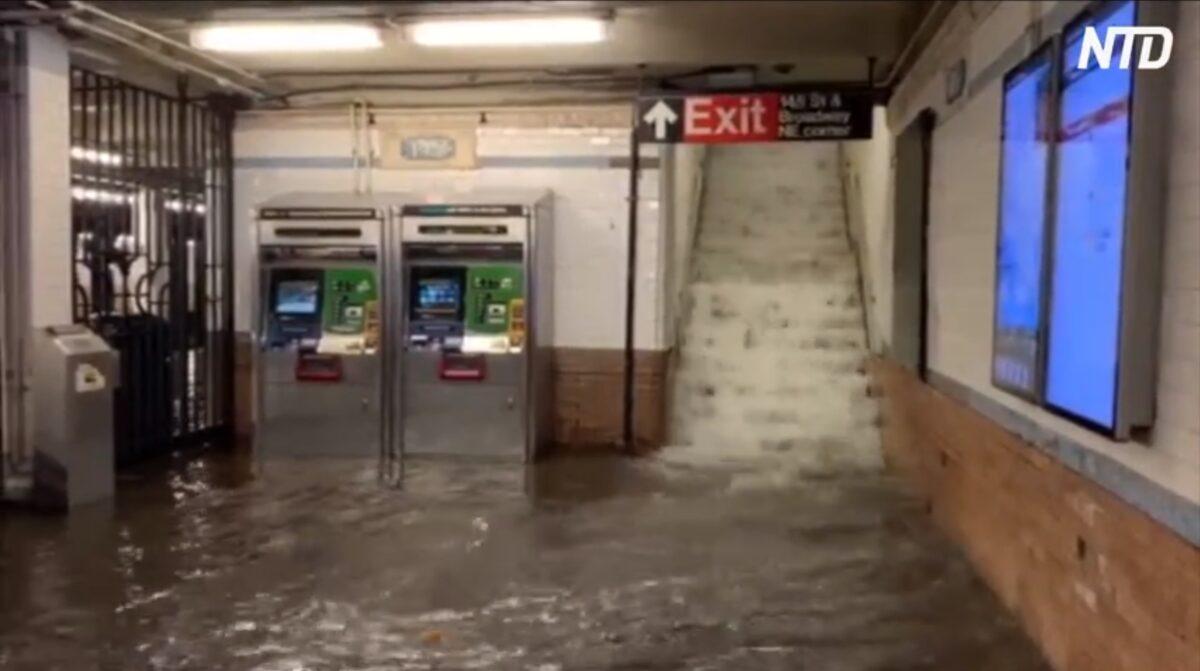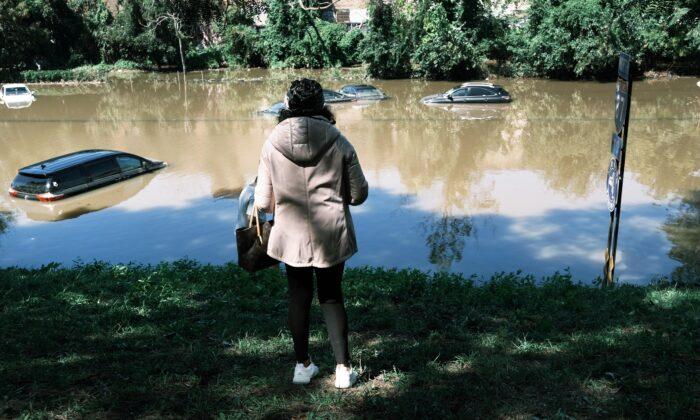Sept. 1 started as a regular rainy day in New York City. By 4 p.m., grey overcast sweated out just 0.13 inches of rain in Central Park, below normal for the time of the year, according to the National Weather Service (NWS). But by midnight, the city would suffer the deadliest weather disaster since Superstorm Sandy.
Early Warnings
NWS New York saw a big storm coming, predicting the “remnants” of Hurricane Ida would bring nearly 4 inches of rain to the city and up to 8 inches in some areas upstate. Soil was already saturated with previous rainwaters, adding to the flood risk, it said.But was that really that serious? After all, the city weathered more than 7 inches of rain from Tropical Storm Henri with minimal damage just the week before. Could Ida, already downgraded to “tropical depression,” be any worse?
Floodgates Open
In the next couple of hours, the city received a cold shower of stunning proportions, as if the heavy clouds opened their floodgates into a seemingly endless vertical stream.Between roughly 8 p.m. and 9 p.m., over 3 inches of rain were recorded at the Central Park weather station, a record in its more than 150-year history.
But it was more than that. It decimated the previous record, set by Henri the week before, by some 65 percent.
Flash floods stormed through the metro area so suddenly and with such fervor some scenes resembled the aftermath of a burst dam more than precipitation.

Lives Lost
At around 10 p.m., police responded to a call about flooding at a Woodside, Queens, home on 64th Street. Upon arrival, officers found a woman, a man, and a 2-year-old boy unresponsive in their basement. They were pronounced dead on scene.Shortly before 11 p.m., police found an unresponsive woman in a Forest Hills basement apartment in Queens. She was later pronounced dead.
A bit after 11 p.m., officers found a 43-year-old mother and her 22-year-old son unconscious in a basement on 183rd Street in Jamaica. The man was pronounced dead on scene, the woman later in a hospital.
Then before midnight, officers found an 86-year-old woman unresponsive in an apartment on 84th Street in Elmhurst, Queens. She was pronounced dead on scene by EMS.
The disaster halted subways and commuter trains and stripped 200,000 people of electricity in the tri-state area.
Local officials blamed climate change and stressed the need for federal financing for resiliency projects.
Flanked by Gov. Kathy Hochul, Mayor Bill de Blasio, and Sen. Chuck Schumer (D-N.Y.), he pointed out his district received substantial federal funding for resiliency projects after Sandy, but the measures weren’t enough.
“Two weeks ago, when we had the major flood, then the record-breaker, we were ok,” he said. “This was different and the loss of lives are unacceptable.”






Friends Read Free